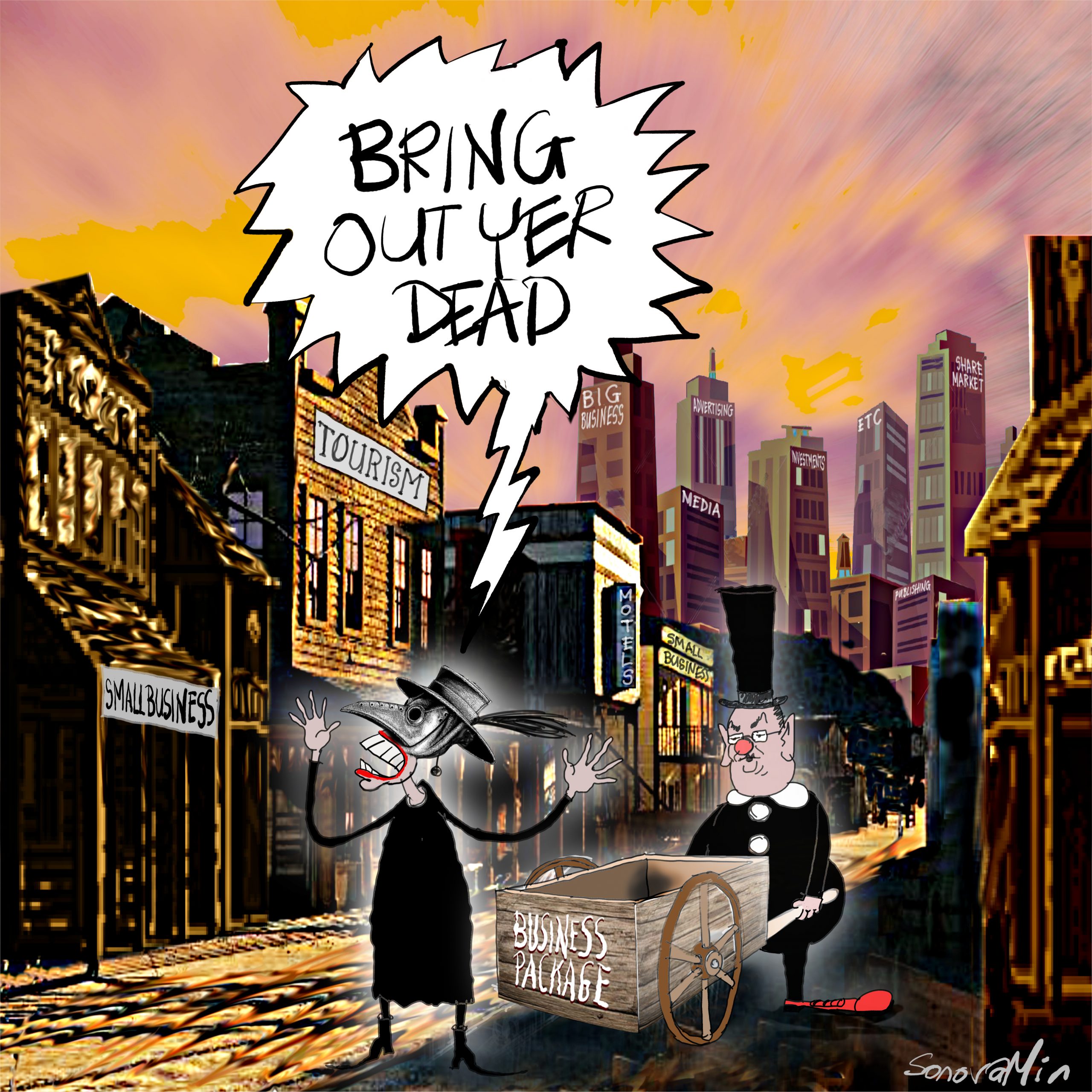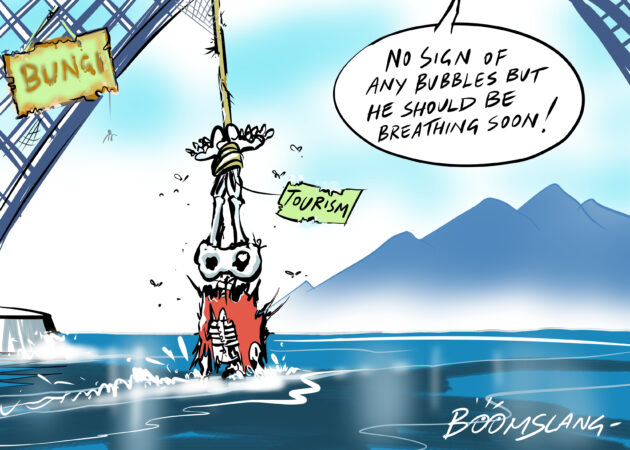In March 2020, Jacinda put us all into lockdown. At the time the whole pandemic was bewildering but she told us that if we locked down once and got on top of the disease, it would be best for the economy in the long run. “Do It Once, Do It Right” was the unofficial mantra at the time – along with “Hard and Early”, “Team of 5 Million” and “Be Kind”.
As we are now into our sixth lockdown, and the longest lockdown to date, at least for Auckland, it is clear that the government is not remotely interested in what is best for the economy; it is only taking advice from health ‘experts’, who would like to have us all locked in our houses with crosses on the door and a man with a cart going around the streets, ringing a bell and calling, “Bring Out Your Dead.”
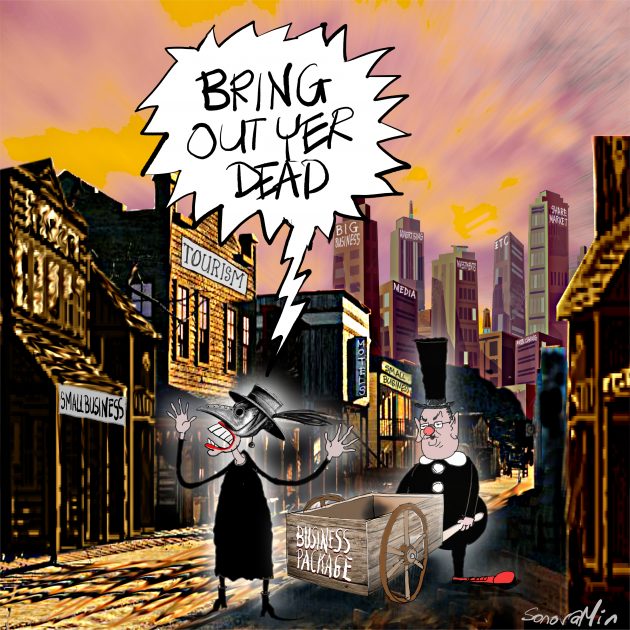
For the many who are sick to death of lockdowns and believe that there are other ways to cope with the virus, all of this is tiresome to say the least, but there is a significant group of people out there still convinced that, if we don’t lock down everyone at the first sign of a cold in the community, then we are all going to die. Comments like this on social media abound.
I’m currently making a list. A list of all the businesses that whinge about the need for freedom to make money without caring about public health. It reminds me of that line in Pretty Woman… “Big Mistake!”
This comment is from someone who knows nothing about health and nothing about economic matters. He just thinks we should all be locked down until the disease has gone forever.
And then, of course, we will all live happily ever after.
A few other people have said to me: it’s OK. The economy bounced back last time, so it will again. We’ll be fine… or should I change the last line to “She’ll be right”.
I can’t see how we can ever be fine… and she definitely won’t be right.
The economy is like a juggernaut – or maybe I should say like an ocean liner. It takes time to turn it around. Things that are happening today will not be felt for 6 months, maybe longer. Things may bounce back in the short term, but in the longer term the effects are going to be felt… and the effects are potentially catastrophic.
Let us start with the fact that the pandemic ruined our biggest export earner – tourism. The effect of this was immediate. The borders were closed before the first lockdown and the 2 million tourists that come here every year were mostly locked out. That situation has not changed in about 20 months. Tourism used to contribute approximately $16.4 billion to the country every year, with another $11.3 billion from indirect sources. That amounts to approximately 9.3% of annual GDP. Allowing for the spike in domestic tourism, as a result of the borders being closed, it is probably reasonable to say that the country has lost approximately 8% of annual GDP for the last 2 years as a result of the borders being closed to tourists.
Then there is the question of international students. Love them or hate them, they bring in another $1.25 billion a year to the country and, to date, we have lost 2 years’ worth of international education.
So far, this has lost us approximately $58 billion in overseas revenue (for the last 2 years). The prospects for 2022 for both students and tourists is not looking rosy at this point either. Make that a possible $87 billion in 3 years. Hardly chicken feed, is it?
Then there is the loss of RSE workers, meaning that fruit has rotted on the ground. The government clearly tried to encourage locals to do the work of the foreign workers – a scheme that failed spectacularly, even with better pay for workers. It is hard to put a number on the losses due to lack of seasonal workers, but the horticulture industry as a whole brings in approximately $6.6 billion each year. Let’s speculate that the loss for the 2020/2021 season is about a third: $2.2 billion. Although more RSE workers are to be allowed in this year, growers claim that the numbers are still woefully insufficient. It looks as if we will lose at least $5 billion in this sector before the borders are opened up.
These are eye-watering numbers. Taking into account the lack of workers in other industries, we could be looking at over $100 billion in lost revenue between February 2020 and (say) September 2022.
Again, juggernauts do not turn around quickly. Even if the borders are open next year, and tourists, international students and RSE workers are allowed in, it will take time to recover the levels of income reached previously. If the border is not open by February 2022, international students will study elsewhere, tourists will go to Europe and the RSE workers will go to Australia, where lockdowns are not quite so debilitating to the country as they have been here. There has been no planning to secure these valuable sources of revenue. The government is flying blind.
None of this even mentions the bars, restaurants and cafes that have stopped trading because of the on-again-off-again nature of lockdowns. Many businesses have struggled. Some that made it through the first lockdown are not going to survive the current one. With the first lockdown being so unusual, patrons of most businesses made a point of being supportive, hoping that it would help local businesses to survive. But this time around, with lockdowns being a tedious part of everyday life, there is not so much support out there for businesses. We all just want to get back to normal. But what exactly is ‘normal’ going to look like after all this?
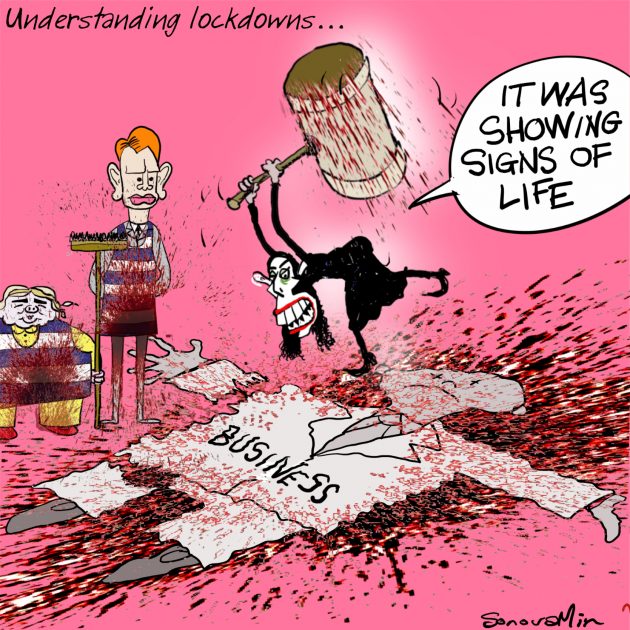
All of that is bad enough, but the loss of revenue to certain sectors also means a significant loss of tax revenue too. Of that $100 billion in revenue losses, perhaps a third of it will be lost tax revenue. It is hard to know exactly, but the government’s tax take must have been significantly affected by lockdowns. Think of all the GST, PAYE and income tax that has not been collected in just the tourism sector alone… and, as I said, we will be going into our third year of this within the next 6 months.
Then there are the government subsidies. It was quite right for the government to offer wage subsidies, business loans and now resurgence payments to try to keep small businesses afloat. A large number of them would have gone to the wall without the subsidies, together with the massive unemployment that would have followed. The government would have found itself funding massive social handouts. But the amounts paid out in subsidies are not insignificant. Over $13 billion was paid out in wage subsidies last year and, while it is hard to find accurate figures on the wage subsidy in 2021 as the scheme is ongoing, it is reasonable to assume that a few more billion has been added to the total. In addition, we have the resurgence payments, small business loans and the total government subsidies must add up to something like $25 to $30 billion for both years so far.
The biggest crime, as far as I can see, is that the government put the whole country into Level 4 lockdown in August 2021 when, in large parts of the country, there were no cases at all. The South Island has not had a single case, and yet the government has funded millions in wage subsidies and business resurgence payments in areas where there are no COVID cases.
A government with a bit of economic knowledge would have only locked down those parts of the country where cases actually exist – and primarily, that would have been Auckland. How many millions of borrowed dollars have been wasted on unnecessary lockdowns in places where people could lead normal lives, go to work or school, go shopping as normal, eat at cafes and restaurants so that their local economy could operate normally? Again, there are no numbers available at this point, but this is a colossal waste of borrowed funds that will have to be repaid when the debt did not need to be raised in the first place.
Total GDP in 2019 was slightly below $300 billion. The loss of tourist revenue, international education and horticultural exports added up to approximately 25% of this amount in 2020. Things are no different in 2021. We will just ‘bounce back’ from that, will we?
The numbers are sketchy, but here is part of a graph showing government debt over the last few years:
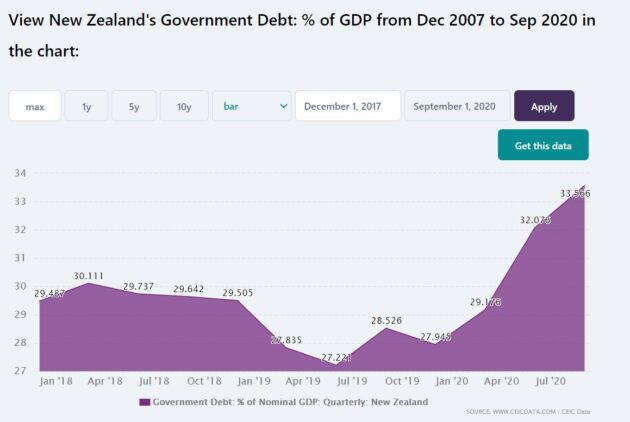
The graph only goes up to July 2020, but you can see the trend. We have had several more lockdowns since then, and the borders have remained closed just about the whole time.
There is no way we can bounce back from this.
In the meantime, the government continues to borrow money like there is no tomorrow… but there is a tomorrow, and with the threat of inflation looming around the corner, primarily because of the government’s quantitative easing programme. I fear we are in deep trouble.
All this for about 4000 cases and 27 deaths. There is something terribly wrong here.
This is what happens when you have a government wildly out of its depth in economic matters. The government should be listening to health experts, but it should be listening to economic experts too. It will take decades to recover from this tomfoolery… and our children will be the ones paying for it. And, unlike in other countries, you will hardly hear a whisper about any of this from our local media. They are not called the Team of $55 million for nothing.
Please share this article so that others can discover The BFD.

